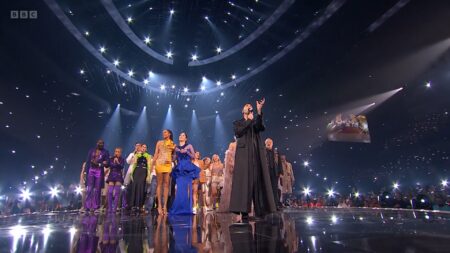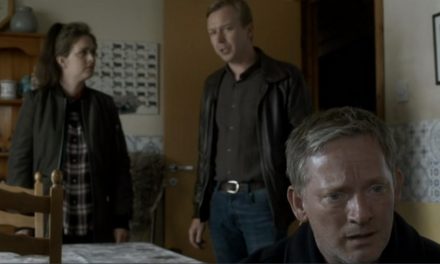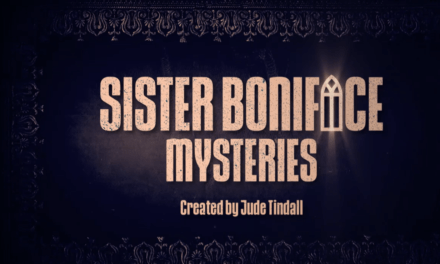Sometimes, coincidence allows us to observe separate but related phenomena that, seen by themselves, would be nowhere near as meaningful as when compared to each other. Such a wonderful coincidence happened recently in the relatively quick succession of two major television events: the Coronation of King Charles on the 6th and Eurovision, 7 days later, on the 13th May 2023. Both were massive television events in the United Kingdom, and both presented unusual viewing figures: the Coronation because it attracted, according to reports, fewer viewers than the mythical television event of Queen Elizabeth’s coronation in 1953, i.e. a time before television was adopted near universally by the British population. Eurovision because it attracted more viewers in the UK than ever before, and 162 million in total worldwide.
Those viewing figures chimed interestingly with my experience – and I feel obliged to mention it because to some extent it’s not massively representative for the rest of the UK: living in Liverpool means being immersed in a city which isn’t exactly fond of ruling elites[1] and tends to look out to the world for alternatives. In addition, Eurovision was in Liverpool this year, meaning this was also a TV event about ‘us’ and, gosh, did the regular comments about how well Liverpool had done and what a friendly city it was go down well here.[2] So on Coronation Day, I found myself sitting outside a pub where, inside, the TV was on, but punters looked boredly on or found their phone screens more interesting, while on Eurovision Final Day I allowed my ten-year-old son to stay up till the end and watch Sweden take the much-deserved trophy.
Rather than ponder on the television audiences, though, I here want to focus on another thing that the comparison makes visible: namely how the televisual texts of these two events imagine the united community it wants to serve. As many researchers highlight, this remains a central function of event and live television (e.g. Stewart, 2020; Hermes and Hill, 2020). Obviously, this also connects to notions of television providing a public service, which, according to Paddy Scannell, has become increasingly defined around the notion of uniting the nation, and he highlights events – in his case the wedding of our new King to his then first wife – as a means to do so. Indeed, this idea, that live event television continues to play a role for public service television, and that the right to provide the broadcast of live events, particularly sporting ones, should be protected for the public service broadcasters, emerges as one of the recommendations of the Puttnam Inquiry into A Future of Public Service Broadcasting.
It is therefore worthwhile looking at these events as texts a bit more. If these live broadcasts help to bring the nation together, and they are broadcast with an awareness of that, then they also say a lot about what the broadcasters – and possibly the policy makers – understand this imagined community to be. And perhaps they allow us to reflect on what kind of community we want to be part of now and in the future. This is particularly important this year and in regard to these two events as the security and certainty of existence of the United Kingdom and Europe are in crisis: the United Kingdom is reeling from the effects of Brexit which includes rising nationalist movements in Scotland, Wales and Northern Ireland and a questioning of the continued relevance or indeed legitimacy of the monarchy. Europe is also reeling from the effects of Brexit and the threat of other right-wing governments destabilising its unity even more, while the Invasion of Ukraine has brought about significant economic instability, leading to social anxieties. As television events, then, these two occasions are staged to reinforce but perhaps also reimagine what it means to be part of these communities.
Stephanie Marriott has described the power of live television coverage to change our relationship to place and time. Discussing the recording of the New Year’s broadcast at the start of the new millennium, she highlights that instead of emphasising the experience of the UK, what was so remarkable about the broadcast was its imaging of ‘the world’ (italics in original text). In other words, television on that day seemed to construct an experience of the United Kingdom only in relation to the world and television’s ability to communicate the world to the United Kingdom. She concludes: ‘Self-reflexively, repeatedly, television was celebrating the transformations it had wrought in human communicative potential’ (p. 4): television here emerged not just in its potential to bring the nation together, but to imagine a larger, global unity that was based on the viabilities of global electronic communication.[3] As she highlights, these transformations have significant implications for how time, space and interactivity are imagined – and through them our relationship to them. How, then, do these two occasions – the Coronation and Eurovision of May 2023 – take part in the transformation of our relationship to the United Kingdom, its place in the world, at this time and for the future?

Fig. 2: The Ascension Choir was one well-chosen example of including a diverse number of people in the Coronation.
Both events were staged with a strong focus on diversity. The Coronation was at pains to include as many representatives from different backgrounds as possible. In many ways, this was done with the hope to emphasise inclusiveness in a decolonised environment, but because it was done within the context of the Coronation, it had the effect to remind us of post-colonial power relations. Thus, the presentation of the regalia was a procession of representatives from different faith communities, while the choice of musical contributors included not just the traditional choirs and renditions of Händel, but also the Ascension Choir as well as South African soprano Pretty Yende. In addition, Bryn Terfel sang in Welsh, thus not just emphasising the diversity created by migration and Commonwealth, but also long-seated diversities (and colonial projects) within the UK. The BBC’s choice of commentator in that regard was interesting: Huw Edwards is clearly a seasoned journalist and presenter with significant gravitas thanks to his role of presenting News at Ten for the BBC. But he is also a Welsh-language speaker who often expresses nationalist sentiments on Twitter and whose Welsh accent is one example of the shift away from the traditional received pronunciation associated with the BBC.
For Eurovision, the focus on diversity emerges partially as a result of it attracting a significant queer following. This was celebrated again this year, not least by a number of contributions, such as the 90s-retro feel-good song ‘Because of You’ by Gustaph from Belgium and the Norwegian ‘Queen of Kings’ by Alessandra. There were references to the kiss between Britney and Madonna, and an interval performance by the ‘Eurovision Queens’ – a group of drag artists, celebrating and empowering trans and other identities. The inclusion in this performance of key Black and LGBTQ+ anthems such as En Vogue’s ‘Free Your Mind’ and Ultra Naté’s ‘Free’ expanded the focus on diversity further. Feminists also had a field day, not least thanks to the Czech ‘My Sister’s Crown’ by Vesna, but also because the presenting star of Eurovision was clearly Hannah Waddingham[4] (sorry Graham) who not only stole the show in terms of glamour, but also because she effortlessly rocked off in a challenge with co-presenter and rock-musician Julia Sanina. Of course ‘unity in diversity’ has been a central tenet of the European Union’s cultural policy (see Banús, 2002), and this was beautifully communicated through the so-called postcards, little inserts before the beginning of each performance which this year showed us landmarks in the Ukraine, then the UK, and finally the country that was competing. Because the focus was on similar landmarks, it highlighted the commonality of historically rooted identities, even though this commonality is as much constructed as any other imagined identity.
Overall, then, both productions tried to be as inclusive as they could be. But there was a significant distinction between them: the Coronation was marked by notions of service and thus constructed diversity as duty-bound. Diversity here emerged as a relationship that felt weighed down by need: the need to serve a king in an awkward overhang of colonial times where power had to be redistributed in order to avoid accusations of the continuation of colonial exploitation. Thus, it was noticeable that the procession of faith leaders during the presentation of regalia was a series of lords and sirs. In contrast, Eurovision was about partying. It was a celebration of joy and power of identities normally marginalised without taking anything away from more traditionally powerful identities. Thus, the German death metal song ‘Blood and Glitter’ by Lords of the Lost, although not garnering an awful lot of points, had as much place there as any of the other contributions. In addition, the three programmes all created a near-mythical status for Martin Osterdahl, the representative of the EBU who announced the legitimacy of the vote and who can perhaps best be described as an ideal representation of a (Western) European hegemonic masculinity.
This difference between duty-boundedness on the Coronation side and celebration on the Eurovision side meant that two very differently structured communities emerged: one which was marked by hierarchies of power and one which did everything to efface those traditional hierarchies. This became particularly evident in the use of close-ups. Eurovision loved the close-up of course. It’s a programme about emotion and tension, after all, and the camera ‘went in’. Beautifully, this included the regular close-ups of audience members, for example after the rendition of You Never Walk Alone[5] when we see a woman crying and being comforted by what we can assume is her friend. Importantly, Graham Norton commented on his own emotional response, and we also see Julia Sanina arm in arm with co-presenter Alesha Dixon, emphasising both the emotional and relational continuation of audience and performers. This too has the effect of erasing differences between audience and performers, thus creating even more of an equal playing field for all: this, Eurovision seemed to suggest, is one big party between us all, no matter who we are.[6]

Fig. 3: Julia Sanina and Alesha Dixon both clearly moved by the rendition of ‘You Never Walk Alone’.
In contrast, the Coronation broadcast remained largely marked by mid- and long-shots. This was probably in line with previous considerations that television cameras could potentially be seen as too intrusive and indeed show the monarch in ways that emphasised their humanity too much. Close-ups were carefully chosen to emphasise the act of coronation, including one of the King’s hand and signature as he signed the declaration of service or that of the Queen’s as she held it out to have the ring placed on it. However, what was really noticeably absent were the close-ups of the audience other than the royal and other elite onlookers in the cathedral. We did get close-ups of non-royal people, though – but only if they contributed something to the service. This created a strange schism between those involved and those who weren’t: the onlookers in the street were faceless bodies, framed from some distance, while those who delivered some service were shown in their humanity. If anything, this created another level within this hierarchy of power: the king, though duty-bound in service to the nation, at the top, then the elite, then the people providing a direct service to the king, and then the faceless masses. Thus, while the Coronation had done everything to emphasise diversity in terms of race, ethnicity and, I would argue, gender, it couldn’t help but re-inscribe differences in class.
Overall, then, the live broadcasts of these two key events imagined two very different communities, although some overlap existed: both imagined the United Kingdom as places of diversity, embedded in supra-national structures to which they firmly belong. But while one of them emphasised service and thereby was marked by hierarchies, the other focused on celebration and in this process erased differences of power. As a means to reflect on the state of the nation, then, the two broadcast events offered us two very different imagined communities; and as I ponder the future, it will probably not surprise you to find out to which I would rather belong.
Elke Weissmann is Reader in Film and Television at Edge Hill University. She’s in the process of untangling her thoughts based on two research projects the British Academy were kind enough to fund. One looked at Transnational Television Drama in the Multiplatform Age, the other at Local Television, Local Communities and Climate Action.
Footnotes
[1] This is largely due to developments since the 1980s: the then Thatcher government considered leaving the city to a ‘managed decline’ while national newspapers, most of all The Sun, placed the blame on the victims for the Hillsborough disaster that saw 97 of its citizens killed and many more mentally and physically scarred for life. It’s created a city usually warring with central government, distrusting media narratives, but also creating the hotbed for internal corruption which has led to the City Council being currently overseen by commissioners. From where we are sitting, though, we think it may be time for another government having some outside oversight.
[2] And deservedly so, if you ask me.
[3] This points to the inherent transnationalism of television that Michele Hilmes has pointed to: television, even when it aims to unite and construct the nation, always also sits within the transnational comparison. However, this also points to television’s potential to imagine larger relations, as the example of the Eurovision postcards make evident, and thus take part in the increasing de-nationalisation of our imagined communities.
[4] There is so much that could be analysed here in relation to the rise of the menopausal woman which Deborah Jermyn surely had a field day taking apart during the broadcast, if she watched, that is.
[5] There is so much that could be said about this song, its relation to the city of Liverpool, its meaning in relation to what I am talking about here etc. But you will accuse me of having turned full Scouse and never shutting up about Liverpool, and you would be entirely right.
[6] Again, I could say so much more about this, including that the acts made sure to connect with the local populace by visiting venues that were culturally relevant to them: the German band Lord of the Lost visited St Hilda’s High School which remains one of the few locally to teach German as a foreign language; while the Portuguese singer Mimicat visited the local Portuguese restaurant. In addition, social media videos that emerged around the broadcasts emphasised the community of friendships that were formed between the acts which ended in a big conga as Mae Muller, the British singer, performed. Here, the performers emerged also as audience of each other, thus erasing the dichotomy between performer and audience.






